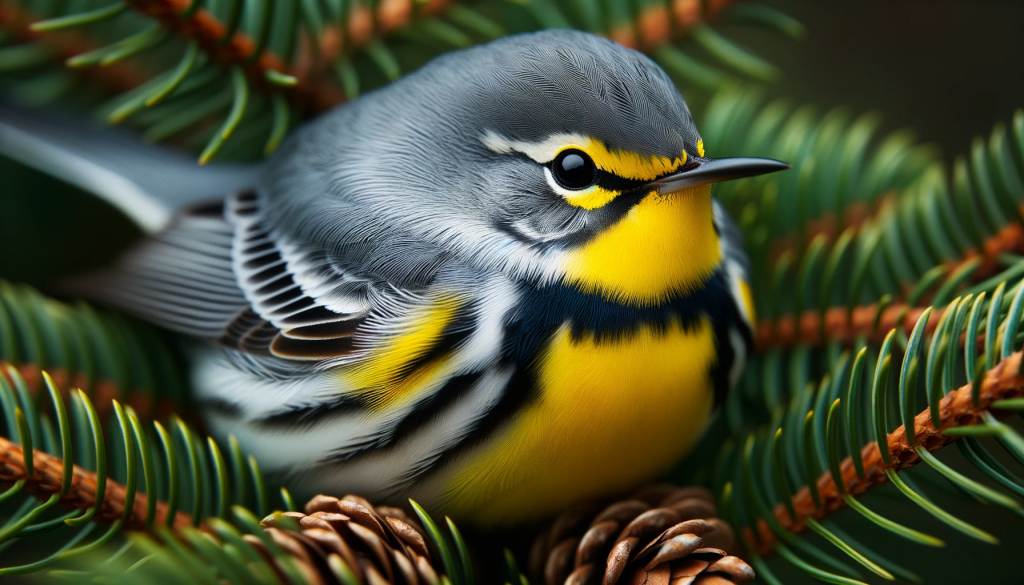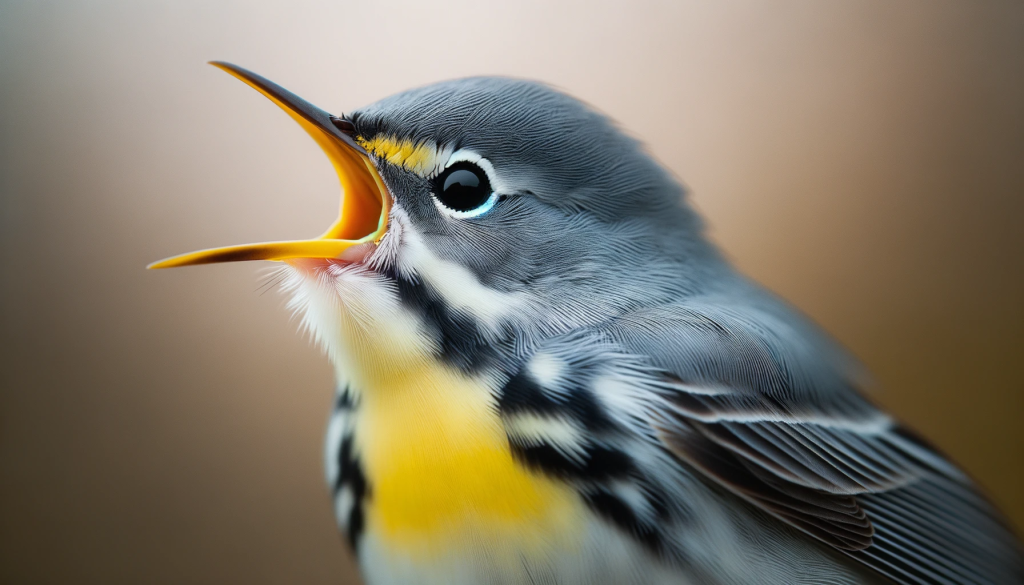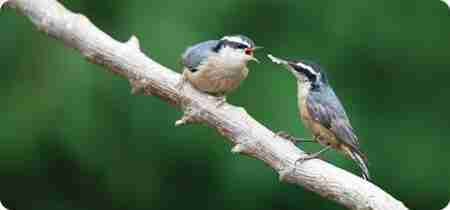[et_pb_section fb_built=”1″ _builder_version=”4.16″ global_colors_info=”{}”][et_pb_row _builder_version=”4.16″ background_size=”initial” background_position=”top_left” background_repeat=”repeat” global_colors_info=”{}”][et_pb_column type=”4_4″ _builder_version=”4.16″ custom_padding=”|||” global_colors_info=”{}” custom_padding__hover=”|||”][pac_divi_table_of_contents _builder_version=”4.22.1″ _module_preset=”default” default_state=”closed” included_headings=”off|on|on|off|off|off” level_markers_1=”whole” hover_enabled=”0″ sticky_enabled=”0″][/pac_divi_table_of_contents][et_pb_text _builder_version=”4.16″ background_size=”initial” background_position=”top_left” background_repeat=”repeat” global_colors_info=”{}”]Imagine this; once teetering on the edge of oblivion, now dancing back into existence, the Kirtland’s Warbler and California Condor are beaming symbols of successful conservation efforts. These endangered species, whose numbers once dipped worryingly low, are now experiencing a noteworthy revival. In “From the Brink of Extinction: The Unbelievable Resurgence of the Kirtland’s Warbler and California Condor”, you will journey across the heroic efforts taken to safeguard these precious creatures, understand the daunting hurdles encountered, and get a deeper sense of what this signifies for worldwide biodiversity and conservation endeavours. Prepare yourself for an awe-inspiring tale of resilience and recovery in the face of near-certain demise.
Understanding the Plight: A Brief History
Historical population levels of Kirtland’s Warbler and California Condor
In the past, the world was home to a significantly larger population of Kirtland’s Warbler and California Condor. These birds flourished in their respective habitats, with Warbler gracing the grasslands of Michigan and the Condor soaring over the Pacific western coast. However, the turn of the century saw a drastic decline in their numbers, pushing them towards the brink of extinction.
Factors contributing to their decline
The rapid decline in the populations of both species can be attributed to several factors. Indiscriminate hunting and habitat loss were major contributing factors. For the California Condor, lead poisoning from eating hunted game also played a significant role in the downtrend. In the case of Kirtland’s Warbler, lack of controlled
wildfires to rejuvenate their habitat was detrimental to their survival.
Initial conservation efforts attempted
Recognizing the imminence of losing these species forever, initial conservation efforts were rolled out. These included elements such as trying to curb hunting and encouraging the growth of jack pine, the natural habitat for Kirtland’s Warbler. Despite these efforts, however, the birds’ numbers continued to drop.
The Lowest Point: Near-Extinction Scenarios
Population numbers at their lowest
The population of Kirtland’s Warbler dropped to about 200 pairs in the 1970s. California Condor was worse, with only 27 individuals remaining in the wild by 1987, marking the lowest points for both species.
Implications for the ecosystem
Their near-extinction had stark implications for the ecosystems they were part of. Both species are integral to their habitats, influencing the biodiversity balance, and their loss would have led to devastating impacts.
Public reaction and increased conservation focus
These grim figures led to
public alarm and a heightened awareness of the urgent need for conservation. This spark of concern resulted in increased funding, amplified efforts, and stricter legislation for the protection of these two species.

Conservation Strategies: The Game Changers
Introduction of new conservation laws and protections
The Endangered Species Act was employed to protect both the Kirtland’s Warbler and the California Condor by imposing severe penalties for hunting. Other laws were enacted to protect their habitats and restrict human encroachment on their territories.
Role of zoos and breeding programs
Zoos across America took up the mantle to host captive breeding programs. These initiatives resulted in successful breeding and increased population rates, especially for the California Condor.
Importance of habitat preservation
Habitat
protection forms a critical part of conservation strategies for both species. It includes safeguarding existing habitats and management processes like controlled fires in jack pine stands for Kirtland’s Warbler.
Recovery Begins: The First Signs of Hope
First signs of population growth
By the early 2000s, the conservation efforts began showing positive results. The populations of both species started showing a steady incline, a symbol of hope for the persistence of these species.
Successful breeding efforts
The captive breeding programs bore fruit, resulting in a considerable increase in numbers, especially for the California Condor. This success was a testament to the impact and value of captivity breeding initiatives.
Assessing the effectiveness of conservation strategies adopted
These early signs of recovery underlined the effectiveness of the conservation strategies that were adopted. This form of validation encouraged the further continuation and escalation of the efforts.

Obstacles and Hurdles: Challenges in Conservation
Dealing with habitat loss and degradation
Despite significant strides in conservation, habitat loss and degradation remain major threats to both species. For instance, housing projects in Michigan endanger the Warbler’s nesting sites, while wind turbines threaten the Condor’s flight paths.
Struggles with captive breeding programs
Captive breeding programs, at times, struggle with the lack of genetic diversity, which can result in offspring’s health issues. The reintroduction of bred species to the wild also poses challenges, as the birds sometimes fail to adapt.
Addressing issues with public awareness and commitment
Conservation activities are significantly undermined if public awareness and commitment are lacking. For these efforts to be successful, it is crucial that society recognises the need for conservation and is willing to adjust behaviors to accommodate these changes.
The Turnaround: Rising from the Ashes
Important milestones in recovery
The recovery of the Kirtland’s Warbler and California Condor is marked by several significant milestones, such as the Warbler’s population surpassing the 2000 mark, and the Condor’s number raising above 400.
Factors leading to successful resurgence
The resurgence of both species can be attributed to sustained conservation efforts, strict legal protections, captive breeding, and habitat protection, demonstrating that with a comprehensive strategy, it is possible to pull species back from the brink of extinction.
Celebrating successes, while retaining a focus on ongoing efforts
While we celebrate these remarkable recoveries, it’s crucial to remain focused on the ongoing efforts required to sustain the progress made. Conservation is a journey, not a destination, and we must remain committed to these efforts.
Learning from Success: Lessons for Future Conservation
Key success factors in the recovery of Kirtland’s Warbler and California Condor
The key success factors in the recovery of these two species are multi-pronged approaches involving legal protection, habitat preservation, captive breeding, and public awareness efforts.
Applying lessons to other endangered species
The successful revival of these species brings valuable lessons that can be applied to other endangered animals. It shows that a holistic and sustained approach to conservation can bring about meaningful change.
The ongoing challenge of biodiversity and conservation
Biodiversity conservation is an ongoing challenge, requiring constant vigilance, research, and sustained efforts. As the case of the Warbler and Condor shows, the journey can be lengthy and fraught with challenges, but the results are worth the effort.

Looking Ahead: The Future of these Species
Projected population growth for the species
The future shines brightly for both Kirtland’s Warbler and California Condor, with numbers projected to continue growing if current conservation efforts are maintained.
Remaining threats and challenges
Despite recent successes, there remain several threats to these species. Continued habitat degradation and
climate change are just a few challenges that conservationists must face and address in the upcoming years.
Efforts necessary to ensure continued survival
To ensure the continued survival of these species, efforts on ongoing habitat protection, breeding programs, public awareness, and continued scientific research are required.
Global Impact: What This Means for Conservation Efforts
Inspiration for other conservation initiatives
The recovery of these two
birds serves as a beacon of hope for other conservation initiatives, showing that the concerted efforts to protect species from extinction can yield positive results.
Impact on global biodiversity
The successful resurgence of these two species positively impacts global biodiversity, with both species playing key roles in their respective ecosystems. It reinforces the fact that every species holds an essential place in the balance of life.
Understanding the role of individual species in the ecosystem
This story highlights the significant role individual species play in the ecosystem. As keystone species, their extinction would bring about a ripple effect leading to biodiversity loss, reinforcing the need to protect each species.
Wrapping Up: The Remarkable Resurgence Story
Summary of the journey from brink of extinction to resurgence
From near-extinction to a miraculous comeback, the journey of Kirtland’s Warbler and California Condor is a testament to the power of conservation and the resilience of nature. It is a beacon of hope in a world facing countless conservation challenges.
Appreciating the collective efforts
The resurgence of these species stands as a testament to the collective efforts of dedicated conservationists, government bodies, and concerned citizens alike. It is a reminder that every effort counts, and it is the cumulative effect that brings about significant, positive change.
The enduring importance of conservation for all species
The story of these
birds underscores the enduring importance of conservation for all species. They serve as a reminder that we hold the power to either push species towards extinction or pull them back from the brink. Therefore, we need to act responsibly and make choices conducive to a thriving natural world.

[/et_pb_text][/et_pb_column][/et_pb_row][/et_pb_section]


 [/et_pb_text][/et_pb_column][/et_pb_row][/et_pb_section]
[/et_pb_text][/et_pb_column][/et_pb_row][/et_pb_section]




